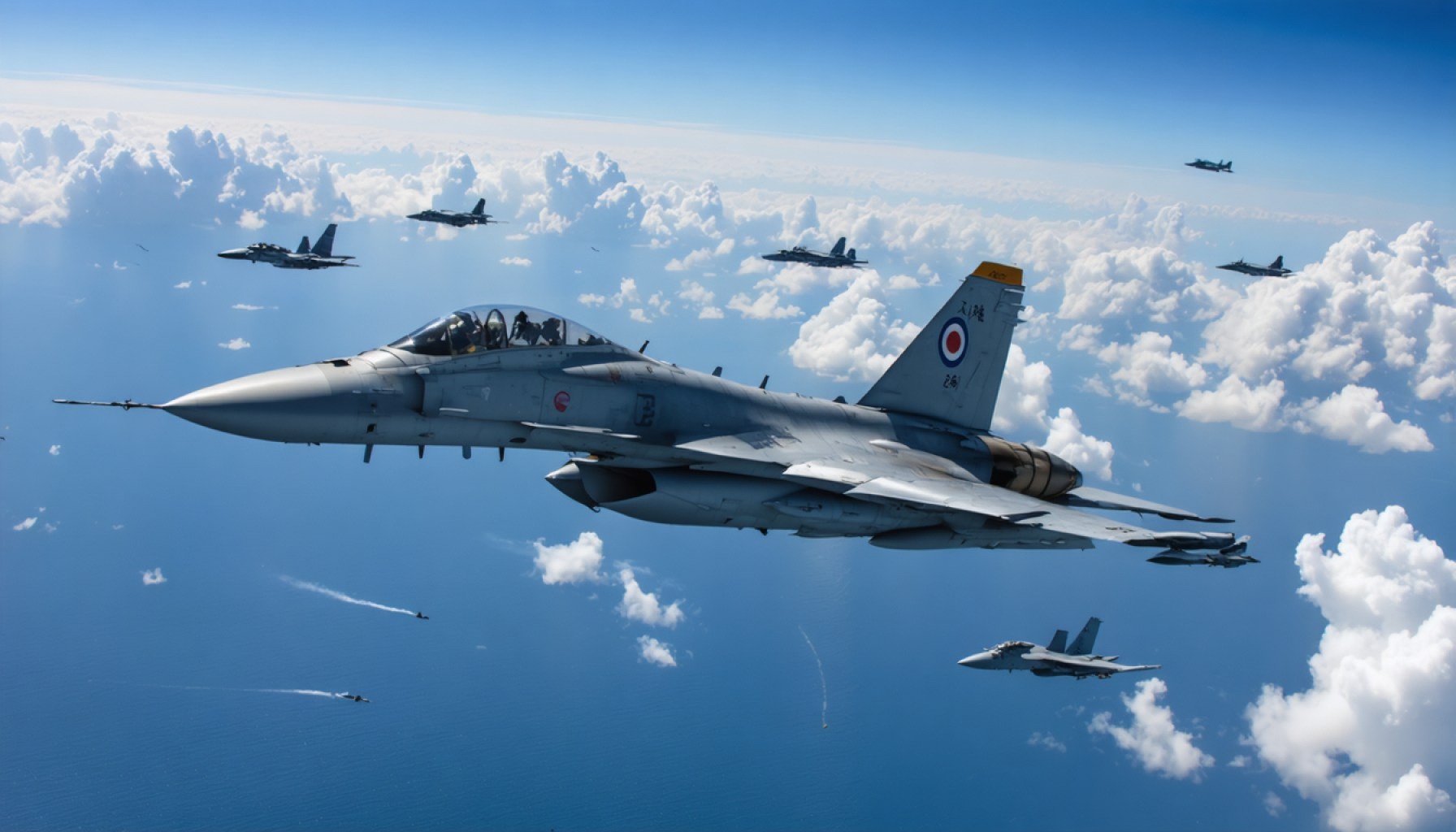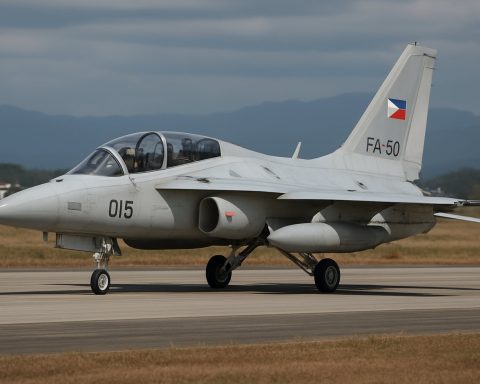- The Japan Air Self-Defense Force (JASDF) recorded 704 fighter aircraft scrambles from April 2024 to March 2025, indicating growing regional tensions.
- Russian aircraft activity surged, resulting in 237 scrambles over the Sea of Japan and around Hokkaido, reflecting strategic shifts.
- Scrambles against Chinese aircraft decreased slightly to 464, yet the numbers reflect significant activity near Okinawa and Miyako Island.
- Chinese UAV flights saw a significant rise, with 23 instances in FY2024, marking a strategic focus on unmanned aerial monitoring.
- Japan’s air defense ensures the protection of its airspace, highlighting a commitment to vigilance amid evolving geopolitical dynamics.
- The escalation illustrates Japan’s balanced approach between readiness and maintaining regional peace.
Japan’s skies have turned into a complex dance of defiance and vigilance, echoing the hum of fighter jets responding to potential threats. From April 2024 to March 2025, the Japan Air Self-Defense Force (JASDF) recorded 704 fighter aircraft scrambles, a number pulsing with tension and veiled narratives. This represents a significant increase from the previous year’s tally of 669, spotlighting growing regional complexities and the dynamic geopolitical theater unfolding in the skies above.
Russia Takes Center Stage
With a dramatic increase in Russian aircraft activity, Japan’s airspace witnessed a palpable shift. Russian incursions prompted 237 scrambles, a sharp rise from the 174 registered the year before. These operations often played out over the Sea of Japan and navigated the atmospheric pathways alongside Japan’s western island coasts. Simultaneously, enigmatic flights orbited the northern island of Hokkaido, hinting at deeper strategic postures.
China’s Tactical Presence
While Japan noted a decrease in scrambles against Chinese aircraft—standing at 464 from 479—their overwhelming presence tells its own story. The Southwest Air Defense Command, Japan’s perennial sentinel, recorded the peak volume of scrambles—411 against mainly Chinese adversaries—driven by active operations near the southwestern islands. Here, fleets of Chinese aircraft frequently pierced the airspaces between Okinawa and Miyako Island, echoing a familiar game of aerial chess.
Across these pathways, China’s unmanned aerial vehicles (UAVs) emerged as a focal point. In an unprecedented rise, flights by Chinese UAVs tripled to 23 unique instances in FY2024 from merely eight the year prior. Iconic models like the WZ-10 Wing Loong 10 and GJ-2 Wing Loong II debuted in Japan’s visual horizon, sparking urgent discussions on evolving defense tactics.
A Glimpse into the Future
Japan’s vigilant air defense practices underscore a significant takeaway: maintaining an unyielding vision amid ever-evolving geopolitical undercurrents. With each scramble, Japan sends a resounding message of resolute diligence and a strategic commitment to preserving its airspace sovereignty.
As regional actors redefine their aerial strategies, Japan stands alert, navigating the thin line between preparedness and provocation in a rapidly changing world. The story of these scrambles is more than just numbers—it’s a testament to unfaltering watchfulness in the theater above. For Japan, every maneuver in the skies of the East signals another chapter in its enduring commitment to security.
Japan’s Aerial Vigilance: Understanding the Strategic Imperatives in East Asian Skies
As Japan’s Air Self-Defense Force (JASDF) records a marked increase in fighter aircraft scrambles from 669 to 704, the skies above reveal an evolving narrative of tension, complexity, and strategic foresight. This surge underscores the growing intricacy of regional security dynamics, particularly involving neighboring air forces from Russia and China.
Key Factors Behind Increased Scrambles
Russia’s Increased Air Activity
Russian aircraft operations in Japan’s airspace have notably intensified, with incursions tallying up to 237 scrambles, compared to 174 from the previous year. Such activities are primarily observed over the Sea of Japan and near Hokkaido, indicative of enhanced Russian strategic posturing in the region. This could be interpreted as probing flights, testing Japan’s air defense response times, or demonstrating military capabilities as geopolitical tensions simmer.
China’s Tactical Supervision
While scrambles against Chinese aircraft decreased slightly, the high frequency of 464 incidents reflects persistent Chinese surveillance strategies, especially around the southwestern Japanese islands. The deployment of advanced UAVs such as the WZ-10 Wing Loong 10 and GJ-2 Wing Loong II emphasizes China’s technological advancement and heralds a potential shift toward unmanned aerial operations, demanding adaptive countermeasures from Japan.
What Does This Mean for Japan’s Air Defense Strategy?
Modernization and Strategic Realignment
Given the rise in UAV encounters and traditional aircraft scrambles, the JASDF might explore technological enhancements and strategic realignment. Possible measures include upgrading radar systems, investing in anti-drone technologies, and strategic deployment of air defense assets.
Collaborative Security Measures
Japan may further strengthen alliances with Western powers and regional partners like the United States, aiming for joint exercises and intelligence-sharing to enhance situational awareness and deterrence capabilities. Enhanced multilateral cooperation could be a silent message of resilience against increased aerial incursions.
Key Questions Readers Might Have
Why Are Russian and Chinese Incursions Increasing?
The intensifying activities are often viewed as strategic moves to assert regional dominance and demonstrate power, against the backdrop of complex geopolitical tensions involving territorial disputes and resource exploration.
How is Japan Responding?
Japan’s vigilant response through increased scrambles signals a readiness to defend its airspace. The JASDF continues to refine its tactics, focusing on both deterrence and rapid response capabilities to safeguard national sovereignty.
Recommendations for Japan
1. Invest in Next-Gen Air Defense Tech: Increasing the capability to detect and neutralize UAVs should remain a priority. Artificial intelligence and machine learning could play a role in forecasting flight paths and identifying potential threats.
2. Strengthen Diplomatic Channels: Engage neighboring countries in dialogue to reduce misunderstandings and prevent incipient conflicts over airspace violations.
3. Public Awareness Programs: Educate the public about national defense strategies to bolster domestic support for potential military investments.
Conclusion
Japan’s commitment to safeguarding its skies isn’t just about responding to aerial incursions. It embodies a broader strategic posture aimed at ensuring regional stability through vigilant monitoring and adaptive strategies. By staying abreast with technological advancements and diplomatic engagements, Japan fortifies its position as a cautious yet firm guardian of its airspace.
For up-to-date insights on Japan’s defense strategy, visit the Japan Ministry of Defense.







